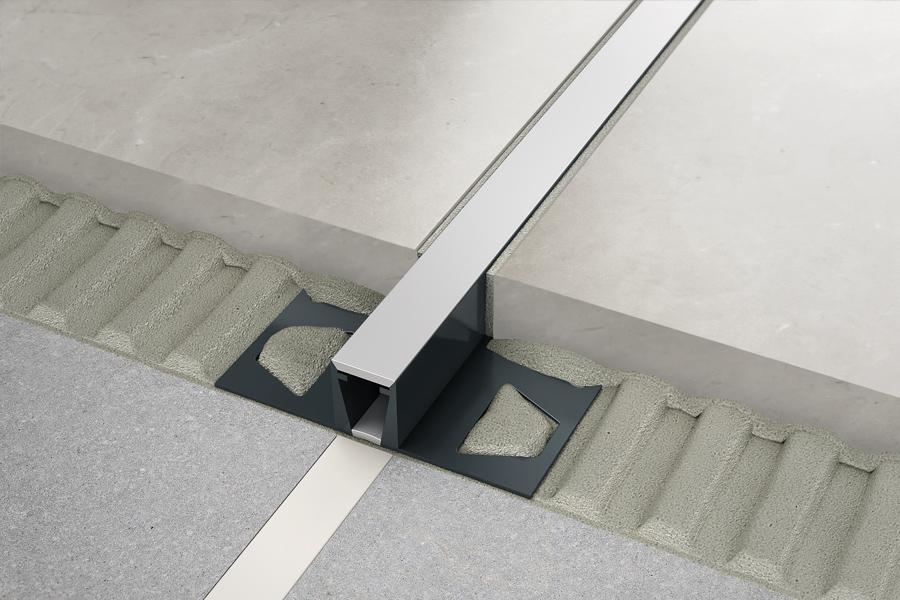WE’VE all seen cases where a tiled surface – particularly in heavily trafficked areas such as shopping centres and airports – has become damaged. Without the appropriate solutions being in place, shear stresses can cause the tiles to crack, split, and delaminate. To protect the tiles, intermediate stress relief joints should be incorporated into the surface assembly.
However, it’s not a case of ‘one-fits-all’ – a different type of joint will be required for different types of application, depending on what kind of stress the area endures. In areas exposed to high traffic, such as shopping centres and airports, it is important to use a movement joint with metal edges to protect the edges of the joint itself, while preventing damage to the edge of the tiles.
The profiles are fixed at the same time as the tiles are installed, so the only additional work needed is to grout the anchoring legs into place. To ensure there’s a joint which is suitable for every conceivable individual application there are many different systems on the market. Because of this, their special features will make a particular joint most suitable for one application, but wrong for another so it’s vital to get this right.
In floors, there are two basic types of movement joints: structural and non-structural. Both types will be subject to different movement patterns – for example, whether movement will occur from the covering through to the floor slab or just in the covering assembly, and this will affect the type of joint needed to prevent damage.
The amount of movement that can be absorbed – and therefore the degree of protection given by the joint – depends on the size of the profile and the compressible material used. Pre-formed surface joints will usually accommodate movement up to 20% of the movement zone width.
Schlüter-DILEX is a series of movement joints, expansion joints and control joint profiles, which offers, the company says, maintenance-free and functional solutions for all relevant movement joints in tile coverings.
Says the company: ‘The range includes profile types for movement joints, expansion joints and control joints, as well as edge and transition movement and expansion joints. A wide variety of Schlüter-DILEX movement and expansion joint profiles in various material combinations are available to cope with the expected mechanical or chemical stresses on the covering.
‘Many calls to Schlüter’s technical support service refer to application problems, where no joint or the wrong joint has been used. Other callers seek advice before the work is carried out – and we would say that it’s in everyone’s best interests to ensure that ceramic and stone tiles are installed with the correct movement joints.’
The company concludes: ‘Prevention is always better than the cure which is why Schlüter is always happy to advise on the requirements of individual projects, as well as delivering training courses on the use of movement joints.’
www.schluter.co.uk
Please click to view more articles about
Profiles and trims

